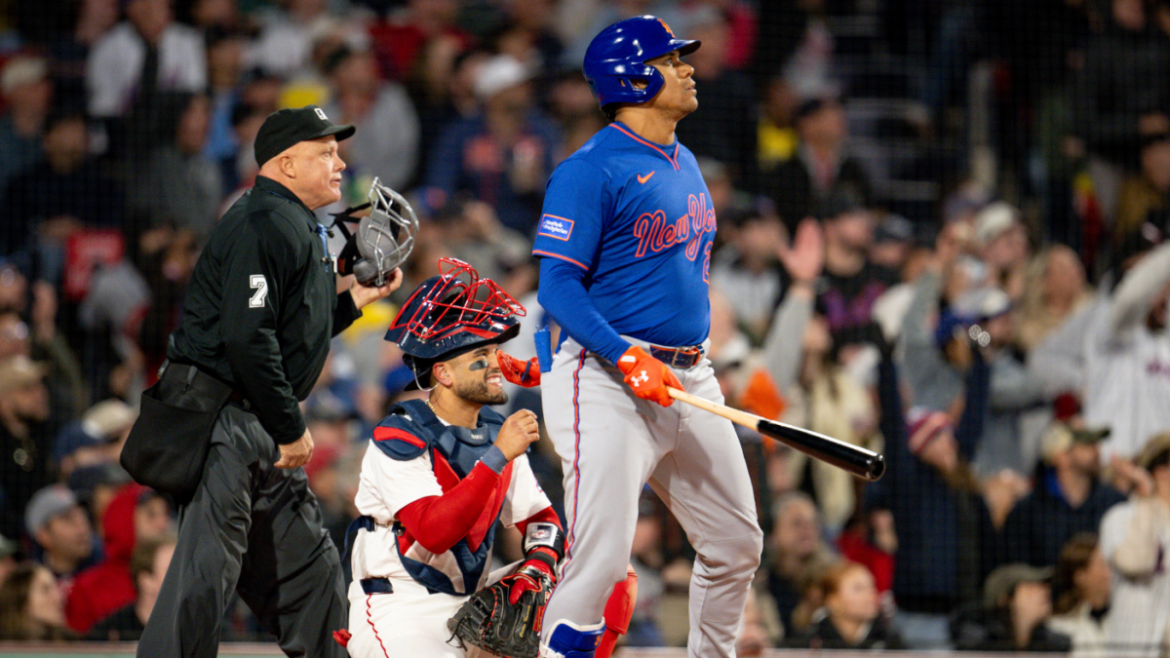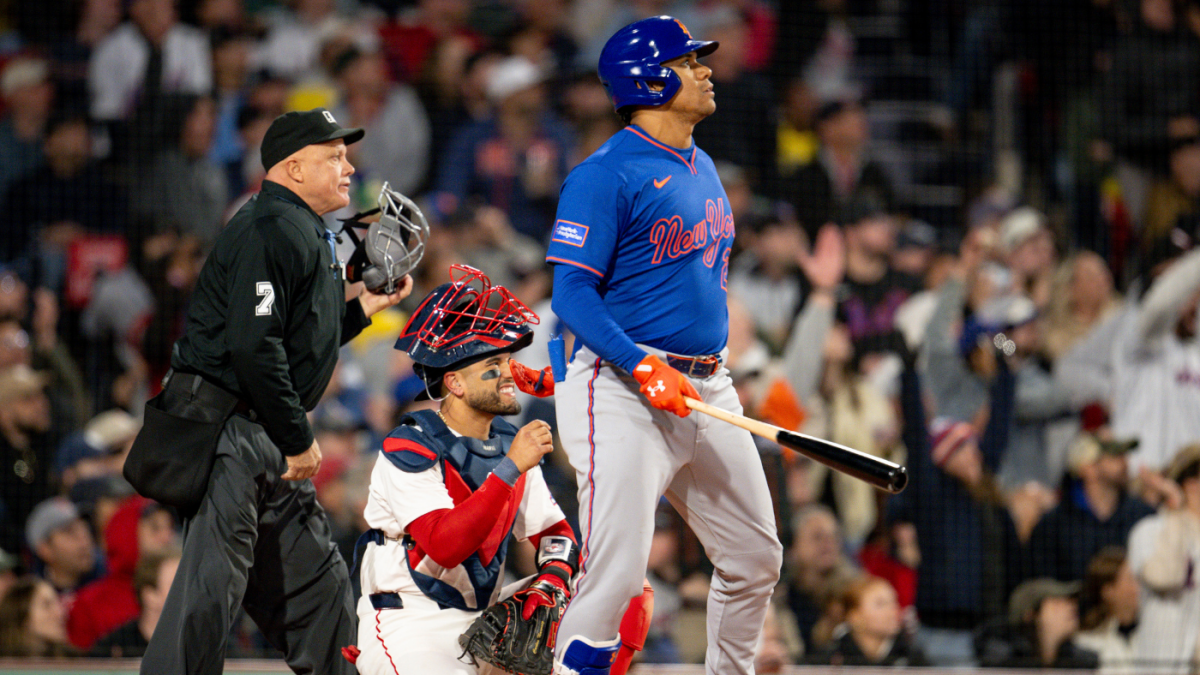Juan Soto and the Mets: A Complex Dance of Expectations, Effort, and Performance
The New York Mets’ acquisition of Juan Soto, who signed a record-breaking 15-year, $765 million contract, was hailed as a landmark to elevate the franchise into the upper echelon of Major League Baseball. However, recent developments surrounding Soto’s hustle, effort, and integration with the team culture have stirred significant discussion and concern among fans, analysts, and team officials alike. This report delves into the multi-faceted dynamics between Soto and the Mets organization, exploring the current narrative, underlying factors, and potential implications.
The Hustle Controversy: What’s Really Happening on the Field?
A consistent theme in recent media coverage is the perceived lack of hustle shown by Juan Soto during games, specifically his reluctance to run aggressively out of the batter’s box. Notable incidents include a ball that Soto believed would be a home run but ended up hitting the Green Monster and merely resulting in a single, where Soto’s effort in running was visibly questioned. Mets manager Carlos Mendoza confirmed that he plans to have a discussion with Soto about this very issue, indicating the matter has risen beyond fan speculation to the attention of team leadership.
From Soto’s perspective and public statements, he contests the accusations robustly, asserting, “I think I’ve been hustling pretty hard.” Despite his defense, both fans and analysts have noted a mismatch between the player’s claim and the observable body language and effort on the field. This discrepancy has fueled frustrations among Mets fans, some of whom have voiced their displeasure openly during games. The tension highlights a challenging aspect of professional sports: the subjective assessment of effort, especially from a player signed to a contract with historic financial magnitude.
Managerial Balancing Act: Mendoza’s Approach to Soto’s Situation
Carlos Mendoza finds himself navigating a delicate situation managing a superstar accustomed to intense scrutiny, massive expectations, and a high-profile contract. Reports note that Mendoza had difficulty convincing Soto to take necessary rest days, reflecting the complexity of managing Soto’s workload relative to his integration with the team and maintaining his peak performance.
Mendoza has been careful in public statements, declining to overly criticize Soto while acknowledging the need to address the hustle issue. This approach possibly aims to preserve team chemistry and protect the superstar’s confidence while signaling a non-negotiable expectation about effort and professionalism. Mendoza’s praise following games where Soto performs well, such as a two-homer outing against the Arizona Diamondbacks, underscores a nuanced strategy of encouragement balanced with candid accountability.
Public and Fan Perception: The Challenge of Winning Over New York
Soto’s transition to the Mets also encapsulates the broader challenge faced by high-profile athletes who move to New York, a city known for its passionate, often unforgiving sports fan base. Historically, New York has had mixed success with free-agent signees who arrive under a heavy spotlight. Critics and analysts have noted that Soto’s return to the Bronx as an opponent before becoming a Mets player already set an intense stage for fans’ expectations.
Soto’s perceived underwhelming hustle, combined with declining offensive statistics in recent games (four hits in 29 at-bats over eight games, with a .376 on-base percentage and .815 OPS on the season), has magnified scrutiny. Fans’ frustration has escalated, sometimes manifesting in boos during games, generating an additional psychological burden for Soto to overcome. This pressure is compounded by the expectations tied to his historic contract and the Mets’ ambitious postseason aspirations.
Soto’s On-Field Performance: Beyond Hustle, Still an Elite Talent
Despite the hustle debate, Soto remains an elite player for the Mets. His 2019 World Series title and impressive offensive skills are not in doubt. Even during stretches where his bat has cooled, his ability to draw walks and maintain a strong on-base percentage shows quality at the plate. His value transcends mere hustle, rooted in exceptional skill, baseball IQ, and potential game-changing power.
Nevertheless, baseball is as much about mental and physical effort as it is about raw talent. Soto’s current situation points to a need for reestablishing full trust and alignment between his effort on the field and the team’s culture and expectations.
Organizational Response and Future Outlook
The Mets organization, including owner Steve Cohen and management, appears invested in ensuring Soto’s successful adjustment and long-term commitment. Cohen’s planned in-person meeting with Soto and his agent signals a high-level dedication to communication and resolution. Additionally, Mendoza’s willingness to publicly acknowledge and plan conversations regarding hustle issues reflects an organizational approach that balances directness with player support.
Success in this regard will likely hinge on Soto’s responsiveness to feedback, how the team manages his rest and workload, and the overall clubhouse environment. Positive endorsements from teammates like Brandon Nimmo, who noted Soto’s competitive spirit reminiscent of legendary athletes, reinforce the idea that Soto can meld into a winning culture if the hustle concerns are remedied.
Conclusion: The High-Stakes Dance Between Talent and Effort
Juan Soto’s tenure with the Mets is at a critical juncture. On one hand, the team holds a generational talent capable of transforming their fortunes. On the other, expectations linked to his contract and role mean every nuance in effort and attitude is scrutinized intensely. The hustle controversy, while possibly overblown to some extent, reflects deeper themes about adaptation, perception, and professional maturity.
Resolving this situation requires clear communication, mutual respect, and a recommitment by Soto to visibly demonstrate the effort commensurate with his superstar status. The Mets must also provide an environment that fosters this transformation without diminishing Soto’s confidence and production. If managed well, this chapter can evolve into a story of growth and team success; if mishandled, it risks overshadowing both Soto’s legacy and the Mets’ championship ambitions.
In sum, this ongoing narrative encapsulates the complex interplay of expectations, player personality, team dynamics, and the relentless spotlight of New York baseball. Soto and the Mets stand at a crossroads—how they choose to move forward will be pivotal for both their futures.





